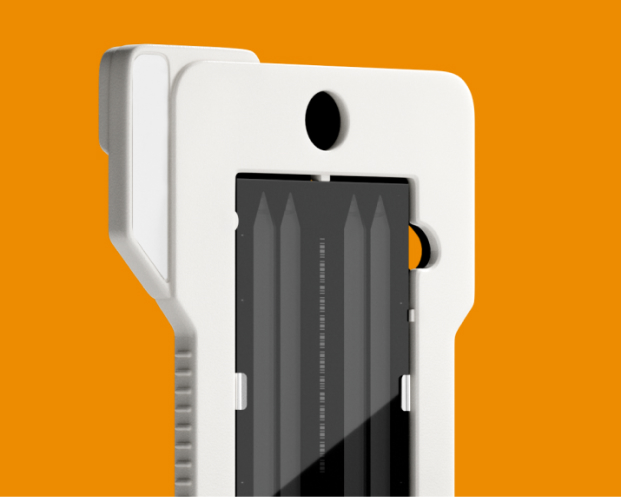
NGS identifies rare disease variants in infants with undiagnosed disease
Discover how the Singapore Undiagnosed Diseases Research program for Kids (SUREKids) uses WES on the NextSeq 550 System to identify new rare disease-associated variants.
A wide world of inquiry
Harness next-generation sequencing and array technologies to do more with a single system

The NextSeq 550 System RNA sequencing solution enables researchers to examine gene expression and identify isoforms, novel transcripts, and gene fusions. mRNA sequencing delivers a detailed snapshot of the coding transcriptome, enabling sequencing of up to 16 transcriptomes per run.
See how researchers use mRNA-Seq with the NextSeq 550 System:
A simple, scalable, cost-effective, rapid single-day solution for analyzing the coding transcriptome using as little as 25 ng input of standard (nondegraded) RNA.
NextSeq 500/550 v2.5 Reagent Kits
Ready-to-use reagent kits include the reagent cartridge, flow cell, and buffer for use with the NextSeq 550 System. Multiple sequencing output and read length options available.
Next-generation sequencing secondary analysis of RNA transcripts, including alignment, quantification, and fusion detection.
RNA-Seq Differential Expression
Differential expression analysis of reference genes with DESeq2.
The NextSeq 550 System offers a simple and reliable method to identify coding variants by accurately sequencing even the most difficult genomic regions. Exome sequencing analyzes the protein-coding region of the genome, as a cost-effective alternative to whole-genome sequencing. The NextSeq 550 System can sequence 3–12 exomes per run.
See how researchers use exome sequencing with the NextSeq 550 System:
Illumina DNA Prep with Enrichment
Fast, user-friendly workflow that combines on-bead tagmentation with a simplified, single- hybridization protocol to reduce total workflow time.
NextSeq 500/550 v2.5 Reagent Kits
Ready-to-use reagent kits include the reagent cartridge, flow cell, and buffer for use with the NextSeq 550 System. Multiple sequencing output and read length options available.
Aligns and calls variants from FASTQ, BAM, or CRAM files, outputting BAM and VCF files.
The NextSeq 550 System sequences up to 384 small genomes per run to provide a detailed view of the genomes of the smallest organisms. Small whole-genome sequencing (WGS) enables comprehensive analysis of microbial or viral genomes for applications in public health, infectious disease surveillance, molecular epidemiology studies, and environmental metagenomics.
Fast, integrated workflow for a wide range of applications, from human whole-genome sequencing to amplicons, plasmids, and microbial species.
Nextera XT DNA Library Preparation Kit
Rapid library prep optimized for small genomes, PCR amplicons, and plasmids, requiring as little as 1 ng of input and 15 minutes of hands-on-time.
NextSeq 500/550 v2.5 Reagent Kits
Ready-to-use reagent kits include the reagent cartridge, flow cell, and buffer for use with the NextSeq 550 System. Multiple sequencing output and read length options available.
BaseSpace Sequence Hub Whole Genome Sequencing App
Quickly extracts biological information from whole-genome sequences using Isaac Alignment and variant calling.
Learn how discoveries enabled by modern transcriptomics and epigenetics methods impact our understanding of biology and disease
Perform ultra-deep sequencing of PCR amplicons with cost-effective analysis of up to hundreds of target genomic regions in one assay.
Enhance epigenetic studies with high-coverage density and flexibility enabled by sequencing-based DNA methylation analysis.
Detect both known and novel features of the coding transcriptome using sequence-specific capture of RNA coding regions.
Scan Illumina microarrays with rapid, sensitive, and accurate imaging for exceptional genetic analysis.
Perform sequencing and high-quality cytogenomic array-based analysis on a single platform for a range of constitutional and cancer research applications.
Isolate and sequence small RNA species, such as microRNA, to study the role of noncoding RNA in gene silencing and posttranscriptional regulation.
Enable fast, accurate characterization of novel genomes with no reference sequence available for any species.
Discover and profile RNA-based drug response biomarkers to help improve the efficiency and success rate of drug development.
Analyze protein interactions with DNA for genome-wide surveys of gene regulation.
Use sequence-specific hybridization to analyze genomic regions of interest.
Discover novel plant and animal SNPs and perform genotyping studies with a low-cost genetic screening method.
Focus time, expenses, and analysis on sequencing only a subset of genes or genome regions of research interest.
Assess genes in organisms present in a complex sample to evaluate bacterial diversity and detect unculturable microorganisms.
Monitor cellular translation processes and determine what regions of a message are being translated with ribosome profiling.
Interrogate CpG sites at single-nucleotide resolution to get valuable insights into the regulation of gene expression.
Analyze coding RNA plus multiple forms of noncoding RNA for a comprehensive picture of the transcriptome.
See what’s possible with the flexible NextSeq 550 System

Discover how the Singapore Undiagnosed Diseases Research program for Kids (SUREKids) uses WES on the NextSeq 550 System to identify new rare disease-associated variants.

Learn how the NextSeq 550 System enables shotgun sequencing of coral and fish mitochondrial genomes for environmental and biodiversity research.